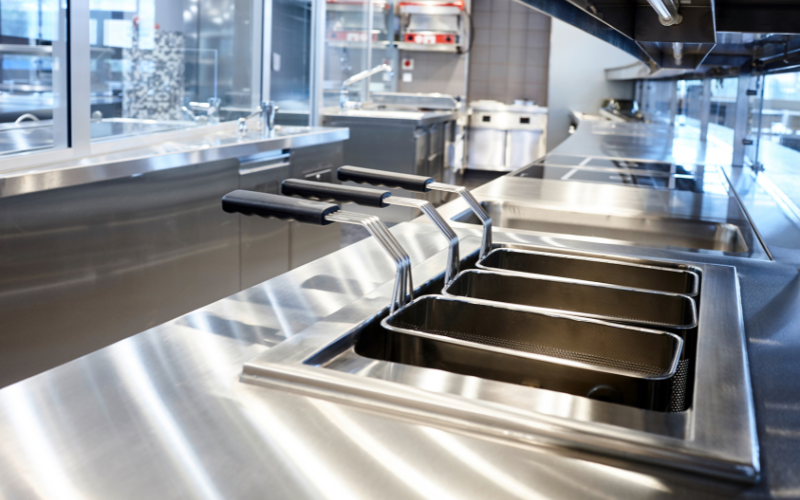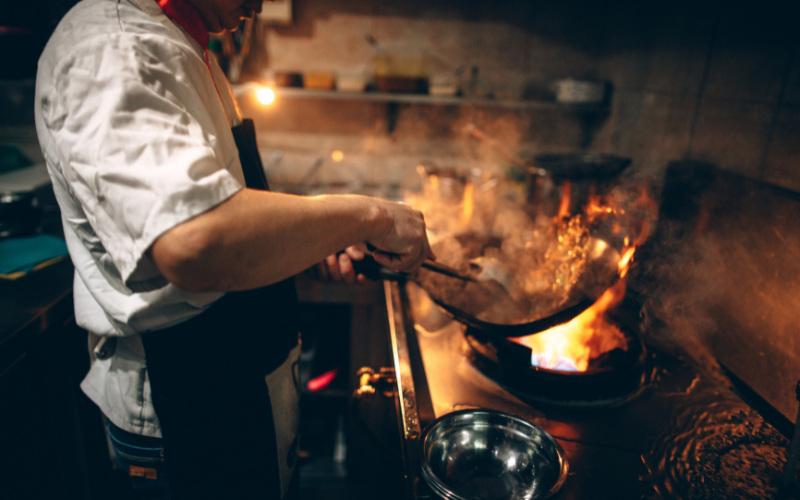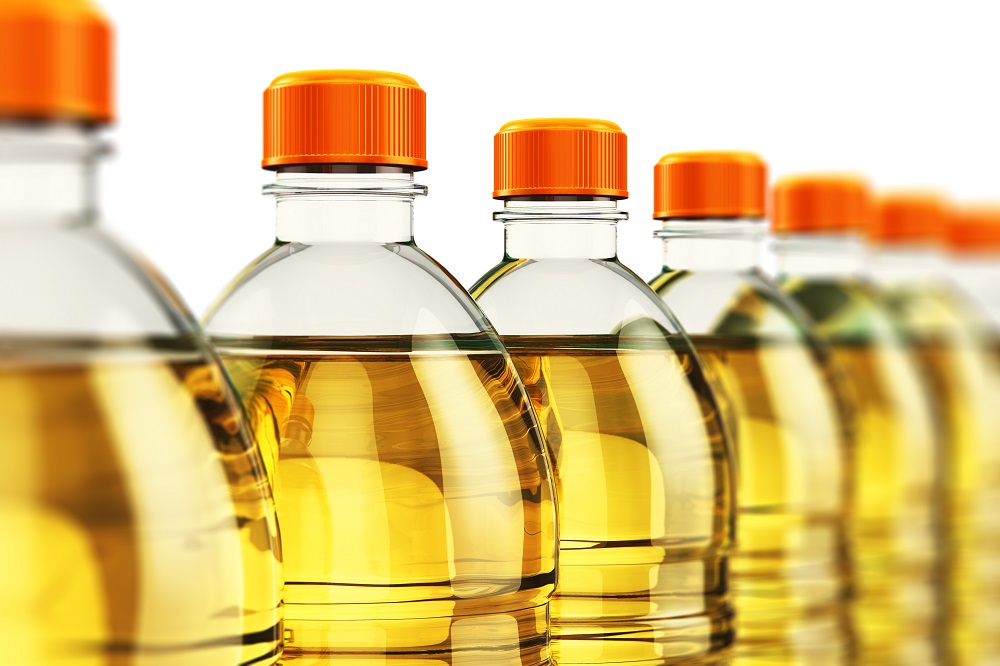In food service establishments, it is important for cooking oil to be handled properly from the time it arrives to the time it is picked up for used cooking oil recycling. Even in its fresh, unused state, mishandling cooking oil can be hazardous. Cooking oil spills are difficult to clean up and can lead to injuries by making the floor slippery. You must have a streamlined process in your commercial kitchen to ensure the proper handling, storage, and use of cooking oil.
In this guide, we discuss how to best handle cooking oil including taking in deliveries, storage, and filling your fryers. If you need do not currently have regular cooking oil delivery or used cooking oil pickup services, talk to our professionals at Mahoney Environmental to set up these services.
Receiving Cooking Oil Deliveries
Commercial kitchens go through a lot of cooking oil which makes it important to work with a professional like Mahoney to provide regular deliveries of fresh cooking oil. The way in which your cooking oil is delivered will depend on the type of cooking oil handling system you use. Fresh cooking oil can be delivered in jugs, jugs in a box (JIBs), or in bulk. Receiving deliveries of cooking oil in bulk for automated systems is the most efficient and cleanest way to receive oil.
If you have an automated closed-loop system in use at your food service establishment, talk to Mahoney Environmental about our Preferred Oil program.
Cooking Oil Storage
Cooking oil should be stored in a cool, dry place that is out of the way. Make sure the cooking oil is off the floor or it could pool on the floor which increases the risk of slips and injuries. Pooling cooking oil may also attract pests like insects and mice. It is much more efficient to have all of your fresh cooking oil stored in the same place.
Filling Fryers
Fresh cooking oil may come in the form of liquid oil or solid shortening. When it comes time to fill your fryers, it is important to handle each type of cooking oil properly.
Liquid Cooking Oil
When pouring liquid cooking oil from a jug or JIB, make sure you pour slowly and carefully. If oil splashes out onto the floor, it will make the floor slippery which can lead to injuries. It is also difficult to clean spilled cooking oil from the floor.
Block Shortening/ Solid Shortening
Filling fryers with solid or block shortening requires a couple more steps than pouring in liquid oil. Before putting shortening in the fryer, either melt it or cut it into small pieces. It should be placed below, between, and on top of the tubes so that there is no air space around the tubes. Make sure you do not disturb the sensing bulbs.
If you did not melt the shortening beforehand, you can melt it by turning on the burners for 5-10 seconds and turning them off for a minute and repeating this cycle until the shortening is completely melted. You should shorten the on time and lengthen the off time if you see smoke coming from the shortening. If there is smoke, that means the shortening is being scorched which will shorten its useful life.
Cooking Oil Filtering
Filtering your cooking oil removes debris like food particles and crumbs from the oil and makes your food taste better. The success of your establishment is determined largely by the quality of your food which makes it important to regularly filter your cooking oil. Filtering cooking oil regularly also extends its useful life. You can add one day to the life of the cooking oil by filtering it and if you skip filtering; you can take two days off its useful life.
Your cooking oil should be filtered 2-5 times each day it is in use. Filtering your oil after each lunch rush and dinner rush will ensure that the oil gets filtered at least twice each day. Cooking oil should be recycled after 2-5 uses.
The best way to filter your cooking oil is with a Portable Filter Machine (PFM). You should follow these steps when filtering your oil:
- Cool the oil before filtering it
- Put the grate with elevated bars resting on the floor of the PFM
- Put a new piece of filter paper on top of the screen and smooth it out
- Set the weight on top of the filter paper
- Push the handles into the protruding metal pieces on both ends to lock in the weight
- Put the basket back into the PFM to catch crumbs and debris
- Attach the hose and filter wand to the PFM
- Remove the lid from the PFM
- Put the PFM next to the fryer and open the fryer door
- Attach the adapter to the exit pipe on the fryer
- Make sure the spout is facing down into the food basket
- Secure the extension onto the exit pipe
- Open the valve on the exit pipe so the oil fills the PFM
- Aim the wand into the fryer and turn on the PFM
- Allow the oil to circulate through the filter machine and back through the fryer
- Rinse food particles from the fryer by carefully spraying the sides with the oil
- As you filter, the valve should remain open, and the oil will keep flowing through the PFM. Run the PFM for 6-8 minutes to ensure the oil is filtered through the machine several times.
Cooking Oil Recycling and Deliveries from Mahoney Environmental
Following these cooking oil handling tips will help you avoid spills and injuries and keep your oil useful for as long as possible. Your kitchen operations will be smoother and safer, and your food will taste better.
Cooking oil can only be used 2-5 times before it should be disposed of and recycled. If your kitchen uses a significant amount of cooking oil, it is important to work with a professional that provides regular deliveries and used cooking oil pickups so that you are always stocked with fresh cooking oil.
Mahoney Environmental offers regular fresh cooking oil deliveries and we have a Preferred Oil program for establishments with automated, closed-loop systems. You can expect deliveries of fresh cooking oil on a regular basis so that you never run out of oil. We also offer regular pickups of used cooking oil for environmentally friendly used cooking oil recycling.



 Call Us Now (800) 892-9392
Call Us Now (800) 892-9392